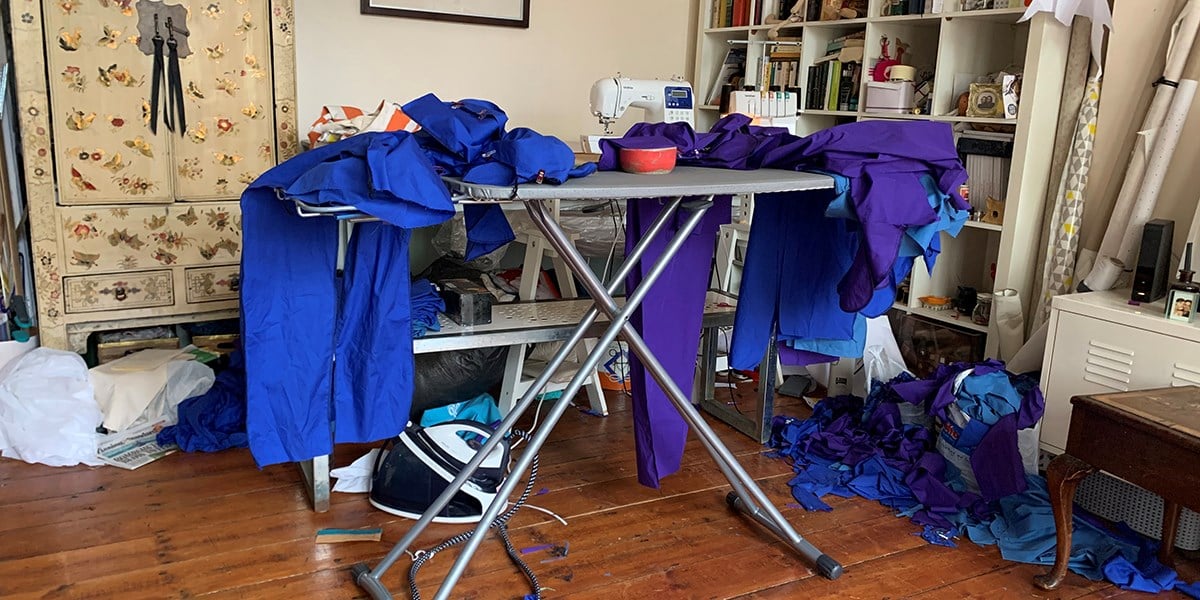
What is life in the UK like under lockdown? How will this strange period of time be remembered by generations to come? London’s Museum of the Home is looking to the public to help answer these questions with a new collecting initiative called “Stay Home.”
“We wanted to capture a candid picture of how people across the country were coping and adapting their lives at home during this unique moment in history,” museum director Sonia Solicari told Artnet News in an email. “‘Stay Home’ aims to capture a personal, unfiltered picture of what life at home in the UK looks like under current conditions of confinement.”
It turns out, people aren’t too shy about sharing intimate photographs of their living spaces, which are now serving also as offices, gyms, schools, and restaurants.
“We have found that people are very open to share their experiences and are excited to have the chance to be part of a unique historical record of home life at a time of self-isolation and social distancing,” said Solicari.
Meg’s family clapping for the National Health Service, a contribution to the Museum of the Home’s “Stay Home” collecting initiative. Photo courtesy of the Museum of the Home, London.
“It’s hard to imagine my old routine. Simple things like traveling on the tube, going to the pub, visiting a bookshop, getting a haircut seem a world away,” said Sharon, an archivist who lives alone and has been furloughed, on the project’s website. “I have really learnt to appreciate art and the wellbeing it brings.”
Launched at the end of April, the collecting effort is an outgrowth of the museum’s nearly 8,000-piece “Documenting Homes Collection,” a national archive of photographs and personal testimonies that offers a glimpse into life across the UK since the early 1900s.
The museum, which is currently closed, is sharing people’s lockdown testimonies on its website and social media channels, and will catalogue submissions for future research and displays.
Emily, who is painting at home during lockdown, shared her story for the Museum of the Home’s “Stay Home” collecting initiative. Photo courtesy of the Museum of the Home, London.
People’s living conditions vary widely, from cramped apartments to spacious homes with sprawling backyards. But some elements of the experience are universal, regardless of class.
“Everybody, whatever their home circumstances, is having to juggle an array of different roles and duties, and find new ways of adapting socially, mentally, and emotionally to this very alien and uncertain time,” Solicari said. Other common threads in submissions include loneliness and isolation—especially pronounced when celebrating milestones like birthdays—but also “a new found sense of community and togetherness,” and an embrace of new hobbies.
“I’ve learned to make pies. My wife is memorizing all the world’s capital cities,” wrote 60-year-old Gareth J, He lives in Hailsham with his wife and stepdaughter, a nurse who uses a separate entrance and self-isolates in her bedroom, eating meals left out on the landing.
Susannah shared her story for the Museum of the Home’s “Stay Home” collecting initiative. Her family, who live separately, took this photo of their online quiz night. Photo courtesy of the Museum of the Home, London.
The contributions speak to the dramatic shift in everyday life, and the process of settling in to a new normal. The mother cooking three meals day for a family of six for whom the kitchen is both heaven and hell. The family who has introduced weekly movie night, and converted a corner of the apartment into a sewing room to make scrubs for the National Health Service. Each entry preserves a snapshot of what life is was like when the UK hit the pause button.
“It’s incredible to capture these moments for posterity,” said Solicari. “If anybody asked, how on earth did you cope during lock down? These stories would tell you how.”